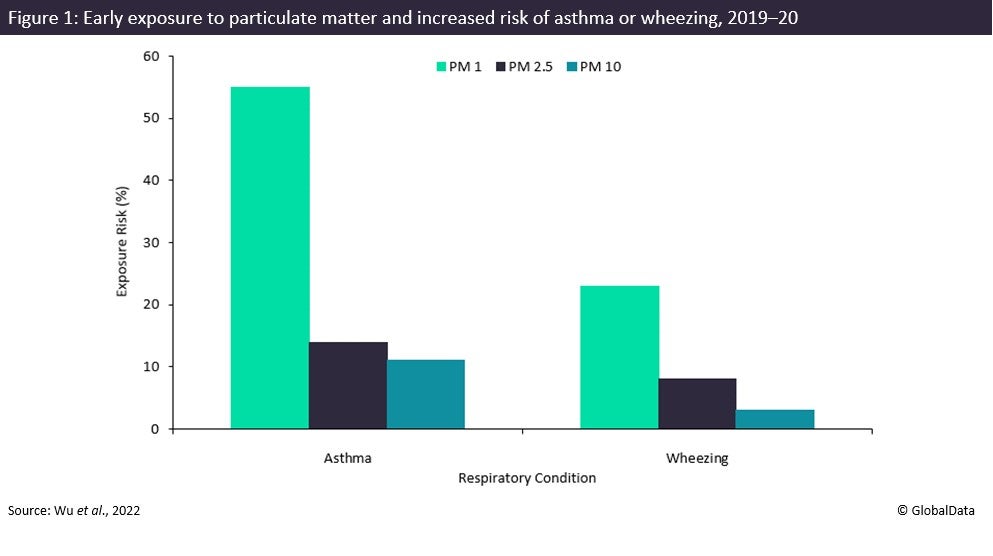Air pollution has posed a longstanding challenge to China throughout its economic transition. The negative health effects of air pollution have motivated aggressive air quality improvement policies to reduce several air pollutants over the past decade. A recent publication by Wu and colleagues in the Journal of the American Medical Association considers the influence of particulate matter (PM), one of the pollutants contributing to poor air quality, on the prevalence of asthma among children in urban China. Their analysis found a positive relationship between exposure to ultrafine (≤1.0μm) PM and childhood asthma diagnoses. These findings signal that despite China’s efforts to reduce air pollution, air quality continues to pose a considerable threat to public health. GlobalData epidemiologists forecast a modest rise in asthma cases in China across the decade reveal a similarly mixed landscape for asthma. While models project a decline in the disease’s prevalence in its younger populations, overall asthma prevalence continues to rise. Such analyses provide insight into the success, failures, and prospects of China’s future environmental regulatory framework.
Between 2019 and 2020, Wu and colleagues performed a cross-sectional study in seven Chinese cities to gauge PM’s contribution to childhood asthma. A modified version of the International Asthma and Allergies in Childhood questionnaire was distributed to households with children between three and six years old. Responses were measured against the average monthly concentrations of particles, segmented by size, within a square kilometre area of households’ addresses. This data was used to estimate children’s PM exposure between conception and one year of age. Analysis suggests a correlation between PM size and childhood asthma risk. As displayed in Figure 1, asthma risk increased by 55% under PM1 exposure compared to 14% and 11% for exposure to PM2.5 and PM10, respectively. Similarly, exposure to PM1 disposed children to a 23% risk of wheezing, exceeding the risk of exposure to larger PM sizes.
These findings challenge PM reduction orthodoxy, which has historically omitted PM1 as a driver contributor to respiratory complications. The authors attribute PM1’s notable effects on asthma risk to its size, which allows to easily reach the lungs and provoke inflammation. Against the backdrop of the government’s decade-long project to improve its air quality conditions, childhood asthma rates serve as an important proxy for its progress. While China nearly halved its average PM2.5 concentrations between 2015 and 2021, they still exceed World Health Organization guidelines. Furthermore, PM1, despite its detrimental health effects, is unregulated under China’s current air quality improvement strategy.
GlobalData epidemiologists forecast that in China, the lifetime diagnosed prevalent cases will increase from nearly 3,159,000 in 2019 to over 3,198,000 in 2029. Cases of asthma among children between 0 and four years old will experience a decline from almost 2,143,000 to approximately 1,688,000 during the same period. While the patterns in childhood asthma are encouraging, studies such as Wu and colleagues reveal a complex epidemiological picture in need of new solutions. As the decade since China’s ambitious air quality improvement policy marks its ten-year anniversary, its public health successes and shortcomings provide valuable lessons as the country contemplates its next steps.

See Also:
How well do you really know your competitors?
Access the most comprehensive Company Profiles on the market, powered by GlobalData. Save hours of research. Gain competitive edge.

Thank you!
Your download email will arrive shortly
Not ready to buy yet? Download a free sample
We are confident about the unique quality of our Company Profiles. However, we want you to make the most beneficial decision for your business, so we offer a free sample that you can download by submitting the below form
By GlobalData








Related Company Profiles
World Health Organization